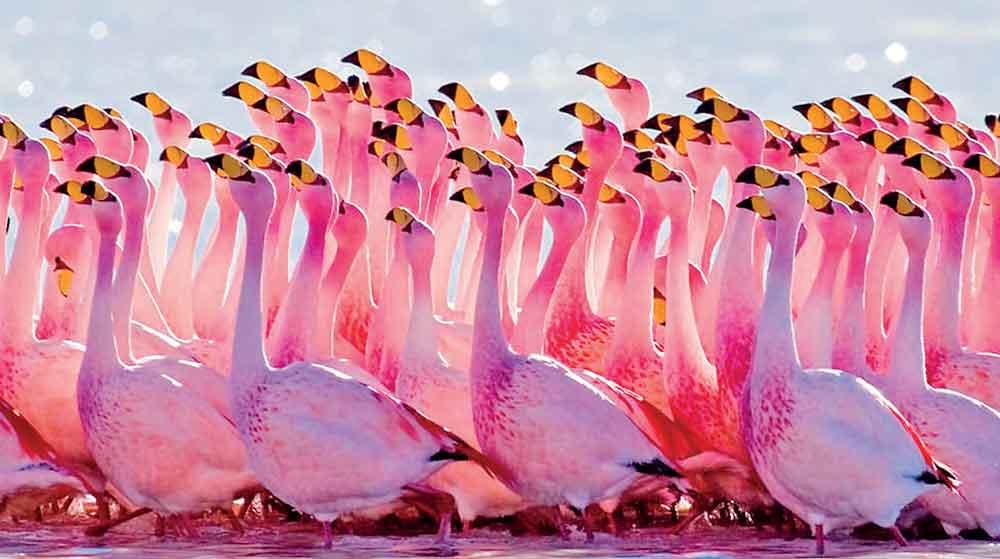
There are few places on Earth where the boundary between heaven and ground completely disappears where you feel like you’ve stepped into another planet, another dimension, another reality. And yet, in the heart of South America, high in the Bolivian Andes, there lies a landscape so strange, so staggeringly beautiful, it seems to defy the laws of nature.
 Welcome to Salar de Uyuni, the largest salt flat in the world and quite possibly the most surreal place you’ll ever see.
Welcome to Salar de Uyuni, the largest salt flat in the world and quite possibly the most surreal place you’ll ever see.
Salar de Uyuni stretches across more than 10,000 square kilometers (4,000+ square miles), a dazzling expanse of white so vast it can be seen from space. But it isn’t just size that makes it spectacular it’s the optical illusion it creates after rain. When a thin layer of water gathers on its surface, the salt flat becomes a perfect mirror, reflecting the sky so flawlessly that the horizon vanishes.
The result? You can’t tell where the world ends, and the sky begins. Mountains float. Clouds ripple under your feet. It’s a dreamscape, a Salvador Dalí painting come to life.
Standing in the middle of this vast reflective wonderland feels like hovering between dimensions an explorer in a forgotten realm of nature’s imagination.
Salar de Uyuni wasn’t always a salt flat. Around 30,000 years ago, the area was covered by a massive prehistoric lake called Lake Minchin. When it dried up, it left behind two modern lakes Poopó and Uru Uru and two enormous salt deserts, one of which is Salar de Uyuni.
Today, the salt crust is several meters thick in the center and hides a rich deposit of lithium beneath it around 7% of the world’s known supply. In fact, it’s one of the richest sources of lithium on the planet, a material essential for powering your phone, your laptop, even electric cars.
So, yes, while it looks like a celestial paradise, Salar de Uyuni is also deeply tied to the modern world an ironic contrast to its otherworldly tranquility.
Salt and solitude aren’t all that lives here.
Salar de Uyuni is home to three species of flamingos: James’s, Chilean and Andean. These elegant, blush-feathered birds somehow thrive in this alien world, flocking to the shallow pools left during the rainy season. Watching them glide across the water, their pink reflections doubled in the shimmering mirror, is a memory that burns itself into the mind forever.
And then there’s the Isla Incahuasi an island in the middle of the salt flat that seems to float in the sea of white. Covered in towering, ancient cacti (some over 1,000 years old), the island offers one of the most surreal panoramic views imaginable: cacti rising out of nowhere, surrounded by an ocean of salt that stretches to the ends of the Earth.
Salar de Uyuni is also famous for something entirely unexpected: optical illusions.
Because the salt flat is so uniformly flat and featureless, photographers and tourists take advantage of the endless white horizon to create hilarious and mind-bending perspective shots. You've probably seen them online: a person being crushed by a giant dinosaur toy, friends climbing into teacups, someone leaping out of a Pringles can. It’s become a beloved tradition here, and the salt flat becomes not just a natural wonder but a playful stage for creativity.
But Salar de Uyuni isn’t just a one-note marvel. It transforms across the day.
- At sunrise, the horizon blushes pink, and the salty surface glows gold.
- At midday, under a searing sun, the brightness is almost blinding white so intense it swallows shadows.
- At sunset, the sky turns purple, and the mirror returns, now reflecting the twilight fire.
- At night, the salt flat becomes something else entirely: a stargazer’s paradise.
Because it sits at over 3,600 meters above sea level (almost 12,000 feet) and far from light pollution, the sky above Salar de Uyuni is blanketed in stars. The Milky Way arches overhead like a brushstroke and if you come during the dry season, the salt itself can sparkle back frost crystals catching the starlight.
The ground twinkles. The sky roars. It’s like floating in space with your feet on Earth.
Salar de Uyuni isn’t the kind of place you stumble across. Reaching it requires intention and a bit of rugged spirit. Most travelers arrive via the town of Uyuni, a remote outpost that’s become a gateway to the salt flats.
From there, guided jeep tours take you out into the wild. Some last just a day, others stretch across three or four, venturing deep into the surrounding high-altitude deserts passing geysers, rainbow-colored lagoons, steaming hot springs and red-rock valleys that look like they belong on Mars. You sleep in salt hotels yes; buildings made entirely from blocks of salt and wake up to silence so pure it’s almost musical.
It’s not luxury travel. It’s adventure, in its rawest and most profound form.
There are destinations that give you memories. And then there are destinations that change the way you see the world.
Salar de Uyuni is the latter. It strips away the noise. It reminds you how vast, how imaginative, how impossibly grand our planet is. In a time where much of the world feels mapped, fenced, categorized and filtered, this place remains gloriously untouched by the ordinary.
It makes you feel small in the best way possible.
Standing there, with the sky beneath your feet and the stars above your head, you realize something: this isn’t just a salt flat. It’s a mirror. One that reflects not only the heavens, but your place within them.
So, if you ever find yourself longing to see something truly extraordinary not just beautiful, but transcendent look no further than Bolivia’s mirror to the sky. Salar de Uyuni waits quietly, endlessly, to show you a version of the world you didn’t know existed.











